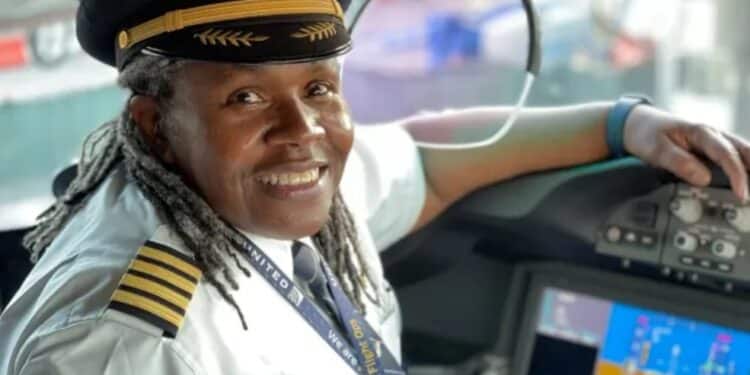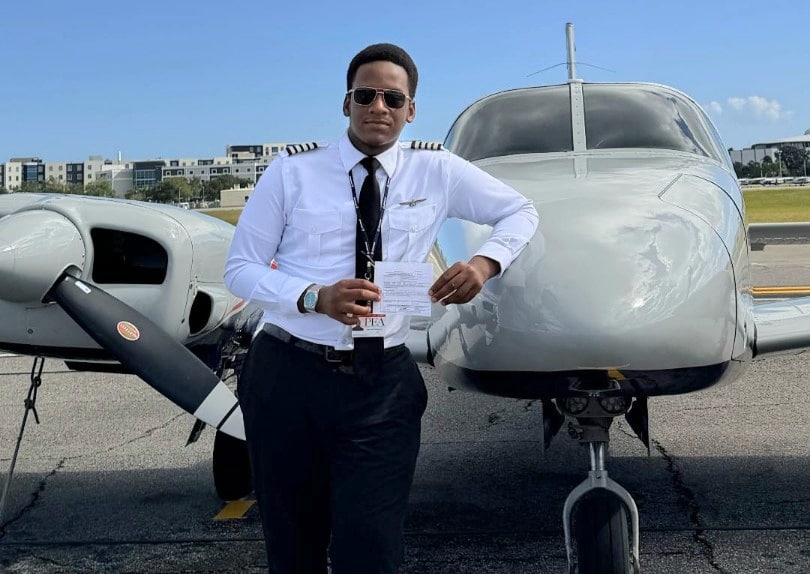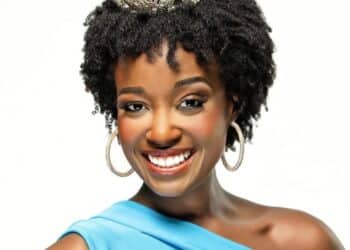Captain Theresa Claiborne has been flying planes, both military and commercial, for about 43 years, breaking down barrier after barrier along the way. But on May 23, Captain Claiborne will land her “final flight” at Newark Liberty International Airport in New Jersey after traveling from Lisbon, Portugal, with her friends and family in tow.
“I’ve had a great career,” Claiborne told CNN Travel via Zoom shortly before setting off for Lisbon. “And it’s time for me to park the brakes for the final time on a big airplane.”
Retirement flight
While she’s looking forward to “closing that one chapter and starting another,” Claiborne can’t help but get a “little teary” when she thinks of the “wide-eyed” children who often marvel at her as she strides through an airport in her pilot uniform.
“After this, walking through the airport, I won’t have a uniform on,” Claiborne says. “People will just look at me like I’m just a passenger like everyone else, that’ll be a little different… I’m hoping that I can still make an impact on the industry.
“To still impart that knowledge on young people, and particularly young black women, that they can do this.”
Becoming a pilot was something Claiborne, originally from Virginia, could never have imagined for herself as a young girl. She was about seven years old when she took her first flight – an international jaunt to Turkey.
“My father was military,” she says. “So I grew up really all over the world… I’d been on big airplanes before but never dreamt of flying one.”
That all changed when Claiborne joined the Air Force Reserve Officer Training Corps (AFROTC) during college and was given the opportunity to fly in a T-37, a twin-engine jet trainer.
“Once I got that first taste of being in the air and being in command of the airplane, I was like, ‘Yeah, this is what I’m going to do,” says Claiborne, who was about 20 at the time.
Sink or swim
While she was keen to apply for undergraduate pilot training, Claiborne explains that the US Air Force was only training 10 women a year at the time and “had already selected the women for my graduating class.”
However, this number soon increased, and Claiborne jumped at the opportunity to earn her pilot wings.
Around six months after graduating from California State University in Sacramento she began pilot training.
“It’s sink or swim… Either you make it or you don’t,” she says, pointing out that she found it particularly difficult at first as “she didn’t have a strong math background.”
“I just beared down and made sure that I made it, because that’s the kind of personality I have.”
In 1981, Claiborne was commissioned as a second lieutenant and went on to become the first Black woman to fly in the US Air Force the following year.
“I did not know until a few weeks before I graduated that that was the case,” she says of the “mind boggling” title.
“And I often say that I’m really, really happy that I didn’t know. I was 22 years old…”
During her years in the US Air Force, Caliborne became the first Black woman to serve as a command pilot and instructor for the KC-135, a mid-air refueling jet.
Claiborne Achieves New heights
In 1990, she joined United Airlines as a flight officer. At five feet, two inches, Claiborne was two inches shorter than the height required to fly commercial aircraft at other airlines at the time, but she would go on to be a United Airlines captain.
When asked about the transition to flying commercial planes, Claiborne stresses that “a pilot is a pilot.”
“You’re in different type organizations, but you’re still a pilot,” she adds.
Claiborne says she has always prided herself on being the best pilot that she could possibly be, stressing that a big part of this is ensuring that her passengers enjoy the flying experience.
“Being good means that I’m communicating with my passengers at all times,” she says. “They know what’s going on. That I keep them safe in every way.
“Obviously, the landing is all-important. I’ve got two more to do really well on.”
“I still get chills when I think about the fact that I was the first, and had I not graduated, the statement that that may have made.”
Claiborne has chosen Newark, New Jersey, to Lisbon (outbound and inbound) as her swan song, with her mother, along with many of her closest friends and family, coming along for the ride.
“I won’t lie, I wanted to go to Paris,” she admits, explaining that she was keen to pay tribute to Bessie Coleman, who moved to Paris to attend aviation school and went on to become the first African-American woman to earn a pilot’s license.
“I wanted to recreate the whole Bessie Coleman thing. But Paris out of Newark is on a different airframe.”
She eventually decided on the Portuguese capital, largely because there’s a two-day layover on the service, which means that she’ll be able to spend some time enjoying the city with her loved ones.
“Generally, we’re there [at the outbound destination] for 24 hours. So you land, you nap, you find something to eat, you nap again, and you leave.
“So this way, with the Lisbon trip, we have an opportunity to enjoy each other.
“And my mother’s made many, many, many sacrifices for me. So this is an opportunity for her to really enjoy herself.”
Increasing diversity
Once she’s landed the United Airlines 787 Dreamliner in Newark, Claiborne will receive the water cannon salute – a mark of respect that sees two fire engines use their water cannons to create a huge arc over a plane.
“That’s something that retiring people look forward to,” she says. “It’s pretty special.”
“I’m a pretty emotional person,” she says. “I’m hoping I don’t cry. But I probably will have a few tears.
“Because after all, it’ll be the last time that I’m piloting a big airplane like that.”
Claiborne has spent her entire commercial flying career at United Airlines and says she feels blessed to have been able to work for the American airline for so long.
“It’s a good company,” she says. “We have the most women pilots of any major United States carrier, and I believe we still have the most Black women.”
In the US, 93.7% of professional pilots are White and 92.5% of professional pilots are male, according to the US Bureau of Labor Statistics.
It’s estimated that there are less than 150 Black women pilots in the US, and Claiborne feels a huge responsibility as one of them.
“I do carry the weight on my shoulders of making sure that I continue to perform in a way that other people who look like me get a fair chance,” she says, before recounting how crew members would sometimes assume her co-pilot was the captain earlier in her career.
“After they’d finished talking, I’d turn around and look and go, ‘What you got for me?’” she recalls.
Claiborne is currently the president of Sisters of the Skies, a not-for-profit organization focused on helping increase the number of Black women pilots, which awards scholarships to “women who are able, and who want to be pilots.”
Claiborne admits that watching the curtain close on her hugely successful career will be a “bittersweet” experience.
“The biggest barrier to flying an airplane is the money,” she explains, referring to the cost of pilot training. “So that’s what we do.”
Theresa Claiborne Stepping Down
Claiborne will be stepping down as president of the organization after seven years, but she plans to continue mentoring young girls long into her retirement, as well as write “a couple books.”
“There are a group of women coming up behind me who are members of our organization that are carrying on that legacy,” she adds.
While this may be the end of her commercial flying career, Claiborne isn’t necessarily saying “goodbye” to piloting forever, and would love to fly a World War II aircraft one day.
“I’ve had friends that said, ‘Come on. I’ll take you up.’” she says. “So I could see myself doing that. That’s on my bucket list too.
“I would absolutely love to fly in a Red Tail, an airplane that the Tuskegee Airmen flew. That would probably be my number one.
“If somebody is offering a ride in the backseat of a Thunderbird, I might as well put that out there. I haven’t done everything…”












